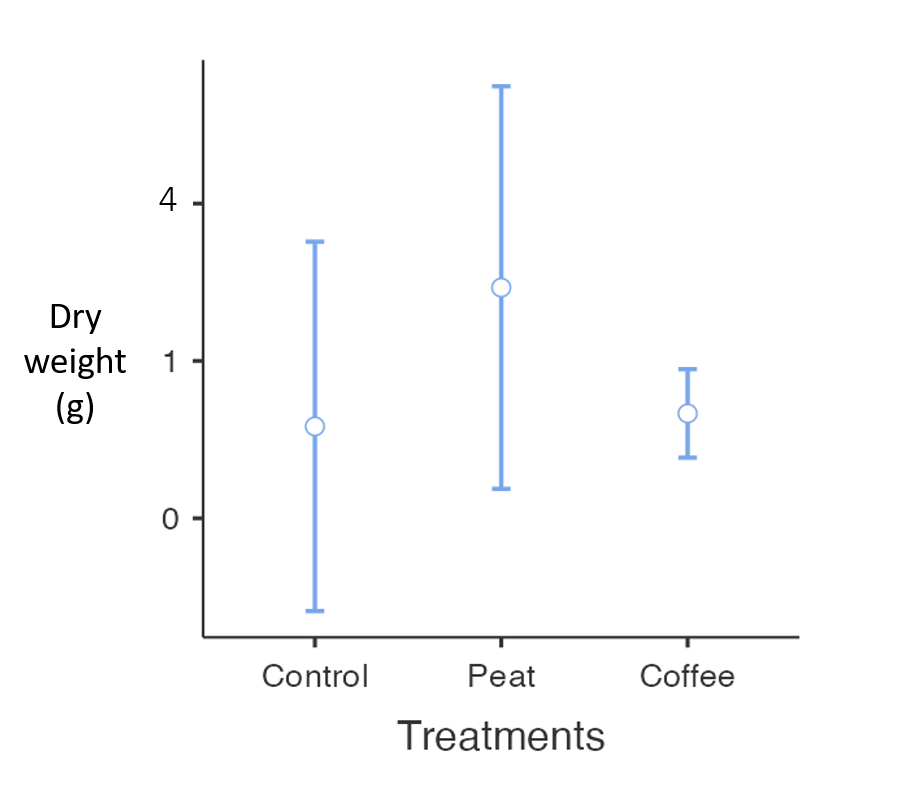

Growth substrate did not affect yield of lion’s mane mushrooms.
Sustainable Agriculture Student Research Project
Growth Substrate Effect on Lion’s Mane (Hericium erinaceus) Mushroom YieldStephanie Bulman, Department of Sustainable Agriculture, 2022 |
Introduction
- Lion’s Mane mushrooms are nutrient dense, an excellent alternative protein, low in calories, carbohydrates, sodium and are cholesterol-free
- This project was closely connected the UN Sustainability Development Goals:
- Responsible consumption / production
- Climate action
- Life on land
- Good health / Zero-hunger
- Focus on the responsible use of finite resources like sphagnum peat moss, and proper management of spent materials such as coco coir, coffee grounds, and straw
- Current research was focusing on growing Lion’s Mane on a grain-based substrate to determine if grain vs. other substrates listed would increase yield
Methods
- Design: Completely Randomized with three replicates and four growth substrates treatments (12 experimental units):
- Control – oak & wheat bran
- Peat – oak, bran & peat
- Coffee – oak, bran & coffee grounds
- Coir – oak, bran & coconut coir
- Experimental Units: 12 oz Mason jars
- All substrates inoculated with Lion’s Mane, Hericium erinaceus, liquid culture on July 24th, 2022
- Jars incubated in controlled environment (CONVIRON growth chambers)
- Temperature: 19 °C
- Relative humidity: 85%
- Day length: 0:24 hr light : dark

Figure 1. Mason Jars (12 oz) in Completely Randomized Design with three replicates and four growth substrates
- Data collection
- Weekly observation and photographs
- Number of mushrooms, fresh weight, and dry weight recorded at final harvest on October 15, 2022 (83 days after inoculation)
Results

Figure 2. Dry weight of Lion’s Mane mushroom by growth substrate. Error bars denote 95% confidence interval around mean of square root transformed values (n=3) to satisfy assumptions of normality and homogeneity of variance. Note non-linear y-axis scale due to back transformation. No significant differences were detected between means.
Conclusion
Mushroom Substrate (oak pellets, peat moss, spent coffee grounds) did not have a significant effect on Lion’s Mane, Hericium erinaceus, mushroom yield.
Acknowledgments
This project was funded by the KPU Student Research and Innovation Grant. Thanks to Dr. Mike Bomford, Andy Smith, and the KPU farm staff and students for project assistance.
